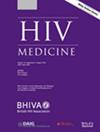Implementation of patient-reported outcomes for people living with HIV: Insights from patients and healthcare providers in a Danish outpatient clinic
Abstract
Objectives
Patient-reported outcomes (PROs) have emerged as a valuable tool for aligning HIV care with patient needs and priorities. This study aimed to explore patient and healthcare provider (HCP) experiences of integrating a PRO solution into standard clinical care for HIV in a Danish outpatient clinic.
Methods
A tailored PRO solution for people living with HIV was developed in a Danish outpatient clinic. Patients were eligible if they were aged >18 years, spoke Danish, had been on effective antiretroviral therapy for 2 years, and had no additional health issues. Patients completed an electronic questionnaire 14 days before in-clinic consultations. HCPs reviewed patients' responses before these consultations. We assessed the usability, acceptability, and relevance of the PRO solution by conducting semi-structured interviews with 24 patients (12 responders and 12 non-responders) and six HCPs. A further 95 non-responders were interviewed over the phone. Data were analysed using thematic analysis.
Results
Respondents found that PROs improved patient–provider communication, treatment planning, and self-management. Non-respondents faced barriers such as health literacy, cultural beliefs, and access to technology, necessitating alternative delivery methods. HCPs found that PROs facilitated person-centred care and symptom management, but HCPs faced challenges such as insufficient training, resources, and organizational support.
Conclusions
Implementing PROs in HIV care is challenging because of the patient diversity, clinician training needs, and organizational adaptations. Nevertheless, the use of PROs is associated with enhanced person-centred care. Future recommendations include tailored use of PROs, better understanding of the impact on patient groups, on-site questionnaire completion, and emphasis on shared decision-making between patients and HCPs.

 求助内容:
求助内容: 应助结果提醒方式:
应助结果提醒方式:


